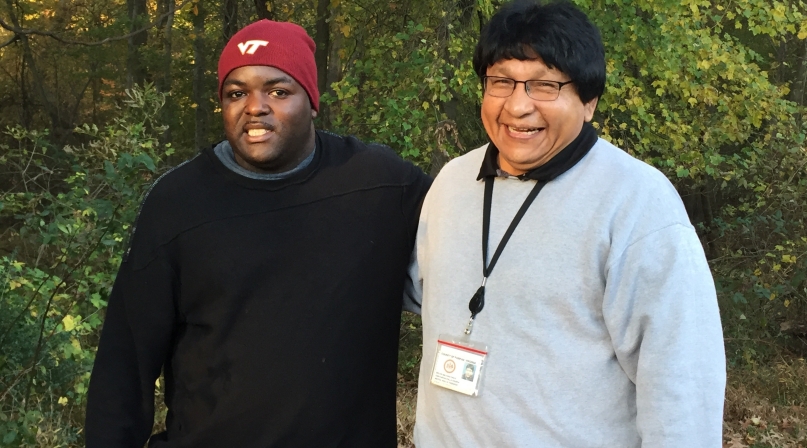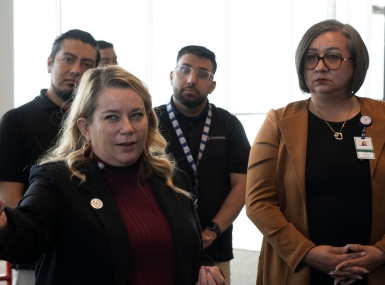Counties lead a PATH out of homelessness

Fairfax County outreach worker connects with suburban homeless population, connects them with services
Jeff has been living in the woods of Fairfax County, Va. for a few years. He likes it there, prefers the solitude, the quiet. The 36-year-old Alexandria, Va. native doesn’t keep many friends or keep in touch with his family right now, but he makes an exception for Rusty Walking Eagle.
Rusty is an outreach staffer for the county’s Projects for Assistance in Transition from Homelessness (PATH) program through the Community Services Board, and he treks out to meet with Jeff and other homeless adults living throughout the suburban county, across the Potomac River from Washington, D.C.
Once they establish relationships, he convinces them to come to the nearby Gartlan Behavioral Health Center, which plays host, twice a week, to a drop-in day center where homeless adults get food, do laundry, talk to caseworkers and pick up supplies and maybe think about housing.
“Once you get that trust and start developing that trust, then the doors start opening up. Now they’re starting to talk,” Rusty said.
Though Fairfax had the second highest median income in the country according to the 2015 American Community Survey, its six homeless shelters are full.
“Many are surprised to hear that we even have a homeless population in our community,” said Dean Klein, director of the county’s Office to Prevent and End Homelessness.” Oftentimes they’re not visible or people aren’t looking in the woods or looking in places where they might see them.”
Mike Suppa, Rusty’s supervisor at the CSB, said his interpersonal skills and empathy are perfect for his role.
“We’re looking for people to connect with people who are homeless. This is a population that is very isolated, that has been overlooked or really has been challenged,” he said. “We want to engage with people, build trust with people and get them to the point where they’re accepting help. They’ll be more willing to go to housing or get the services they need.”
Rusty enjoys the challenge in figuring out how to reach people and earn their trust.
“A lot of the people are so mentally challenged that they won’t accept the help; that’s one of the most challenging things,” he said. “I’ll keep trying, though. It doesn’t mean I’m going to quit. I’ll continue to engage that individual any time I see them. I’ll continue to offer them food, snacks or some water.”
He’s won Jeff over with talk of Virginia Tech football or Jeff’s love of reading and writing. And he helps calm Jeff’s nervous energy.
“He talks to me a lot, gets me to think about stuff before I do it. He’s really good company,” Jeff said.
“He makes me feel like there’s hope in life.”
Attachments
Related News

El Paso County, Texas helps migrants on their way
Though they don't often stay more than a day, asylum seekers receive care and services from El Paso County, Texas before they leave for their next destination.

L.A. County fends off homelessness with an assist from A.I.
A predictive model pulls data from six county departments to create a list of the county’s most vulnerable population — people who frequently show up in the county’s criminal justice and hospital systems and who access benefits like SNAP.

